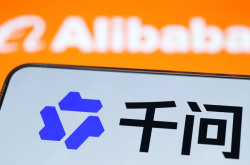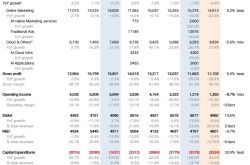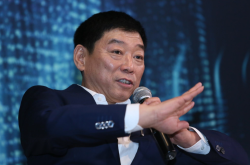A Fleeting Success or the Dawn of a True Comeback? Leapmotor Showcases Its Mettle with Profitability
![]() 11/20 2025
11/20 2025
![]() 525
525
The new energy vehicle (NEV) market has never witnessed such intense competition as it does today. Price wars have swept across the industry, technological advancements are accelerating at a breakneck pace, and capital enthusiasm has waned, leading to the exit of numerous once-promising new-force automakers in the ongoing industry shakeout. Amidst this cutthroat environment, Leapmotor, a company that was once criticized for 'lagging behind,' has once again managed to break through the competitive fray.

In the third quarter of 2025, Leapmotor posted a net profit of RMB 150 million, reversing the losses it incurred during the same period the previous year and over preceding quarters. This accomplishment was fueled by a doubling of sales and a substantial improvement in gross margins. Financial reports reveal that in the first half of 2025, Leapmotor delivered 221,664 new vehicles, securing the top spot among Chinese new-force brands in terms of sales volume. This represents a 155.7% increase compared to the same period in 2024, with sales demonstrating steady growth for four consecutive months since March of that year.
However, the 'good news' of profitability cannot mask the underlying anxieties surrounding the company's survival. Sandwiched between industry giants BYD and Tesla, as well as first-tier new forces like NIO and Li Auto, is Leapmotor's 'profitability' merely a temporary reprieve achieved through cost-cutting measures, or a genuine turning point that validates its business model? Is its heavy reliance on the overseas market a blue ocean of opportunities leading to a prosperous future, or another trap that demands significant investment? As the industry shifts its focus from 'pure sales volume' to a dual assessment of 'profitability and health,' Leapmotor's journey has only just begun.
The Shadow Behind the Glory
Despite its impressive sales growth, Leapmotor is confronted with numerous crises, particularly in its financial situation, which raises serious concerns.
In September 2025, both Leapmotor and its subsidiary, Lingpao Automotive Trading Co., Ltd., were listed as 'discredited entities subject to enforcement.' In layman's terms, the court ordered them to repay debts, but they failed to comply. What's even more absurd is that they had already been subjected to compulsory enforcement for the same case as early as June of that year. Curiously, Leapmotor is not short on cash, boasting nearly RMB 29.6 billion in cash reserves in the first half of 2025. So, why would it drag its feet on repaying a debt of just over RMB 3 million? This move is truly perplexing.
On the flip side, Leapmotor's brand image is out of sync with its sales volume. Online, there is a lack of fanfare or brand loyalty. Instead, Car Owner Forums (car owner forums) are rife with complaints: 'plastic parts rattling,' 'unable to reach after-sales service,' and so on. On Xiaohongshu (a popular Chinese social media platform), voices of hesitation are prevalent: 'Is this car worth it?' 'Should I dare to buy it?' The overall atmosphere is one of caution and a wait-and-see approach.
Ultimately, Leapmotor follows a strategy of 'ultimate cost-effectiveness.' Laser radar, triple screens, power-absorbing doors—features typically found in mid-to-high-end models—are crammed into a car starting at just RMB 120,000. Achieving this relies on 'full-domain self-research' and stringent cost control, such as optimizing the supply chain and enhancing production efficiency.
However, 'high configuration at a low price' is a double-edged sword. While it attracts buyers and boosts sales, the low prices necessitate compromises in other areas. Many car owners report that the interior appears cheap, the car rattles occasionally, and after-sales service lags. While this path may offer rapid growth, its long-term stability remains questionable.
Overseas Expansion: Will It Pay Off?
In today's increasingly competitive domestic market, going global has become an almost inevitable choice for all Chinese automakers. For Leapmotor, overseas business is not just a new growth area but a crucial factor in winning recognition from capital markets in the future. Financial reports indicate that by the third quarter of 2025, Leapmotor's overseas sales and service outlets had approached nearly half of its total, with overseas deliveries surging, truly becoming a 'second growth engine.'
Leapmotor's breakthrough in recent years owes much to its resolute globalization strategy. In 2024, it forged a partnership with European automotive giant Stellantis, which invested approximately €1.5 billion to acquire about a 20% stake in Leapmotor and jointly established 'Leapmotor International.' This joint venture, 51% owned by Stellantis, is responsible for Leapmotor's export and sales in overseas markets. As Leapmotor's founder, Zhu Jiangming, put it, this is 'changing ships to sail overseas'—leveraging Stellantis' global dealership network, Leapmotor quickly entered multiple markets, including Europe, Southeast Asia, the Middle East, and South America.
However, beneath the surface prosperity of overseas markets lie hidden concerns. Firstly, while this cooperation model offers a quick start, a significant portion of the profits must be shared. As the joint venture is controlled by Stellantis, Leapmotor must split the earnings from each vehicle sold overseas with its partner, potentially resulting in lower net profits per vehicle than in the domestic market. The financial reports do not disclose separate profit figures for overseas business, leaving the true 'value' of this 'second growth engine' open to question.
Moreover, overseas markets are far from easy to conquer. In Europe, Leapmotor faces not only electrified products from local players like Volkswagen and Stellantis' own brands but also direct competition from Chinese peers like BYD and SAIC MG. Additionally, varying regulations across countries, differing consumer habits, and the need to invest time and money in building after-sales systems pose real challenges. While Stellantis' channels have helped Leapmotor overcome the initial hurdle of market entry, brand building and cultivating user loyalty from scratch ultimately require steady, self-driven efforts.
The Battle for Breakthrough Among New Forces
In today's fierce competition among new-force automakers, Leapmotor is not the only player facing challenges.
Li Auto is currently experiencing growing pains in its transition. In the first nine months of this year, Li Auto sold 297,000 vehicles, falling short of its annual target of 640,000 by less than half, placing it under considerable pressure. NIO, despite initial success with its multi-brand strategy, still faces underwhelming overall sales, with cumulative deliveries of 201,000 vehicles in the first three quarters, achieving only 45% of its annual target.
For HiMo Intelligence, the issue lies in setting overly ambitious goals. At the beginning of the year, it announced a sales target of 1 million vehicles, more than doubling its performance from the previous year. However, it has currently achieved less than 35% of this target, making it virtually impossible to meet.

In comparison, Leapmotor has achieved 79.1% of its annual sales target in the first three quarters, a relatively impressive performance. However, the 'discredited entity' incident that surfaced earlier this year has cast a shadow over its future. Ultimately, what Leapmotor needs most now is to focus on 'brand elevation.' While it emphasizes adhering to 'technological long-termism,' its brand image remains somewhat vague in the minds of ordinary consumers. Unlike Li Auto with its 'family' tag, NIO with its 'service' reputation, or Tesla with its 'tech halo,' Leapmotor still lacks a distinctive feature that resonates with people.
'Full-domain self-research' is indeed a strength, but how to translate this technological advantage into tangible value that users can directly perceive and even pay a premium for is a challenge Leapmotor must address next.
Technology Determines the Outcome
In the development of the new energy vehicle industry, a clear fact emerges: most automakers face a common challenge—how to achieve sustainable profitability. For Leapmotor, its ability to maintain existing advantages while achieving true qualitative breakthroughs will directly determine its industry position and market landscape in the future era of intense competition (survival competition).
Firstly, stabilizing the 'cost-effectiveness' foundation while actively expanding overseas markets is the most critical direction for Leapmotor at present. The success of Leapmotor's C11 and T03 models lies in their precise targeting of pragmatic users' needs—high configuration, affordable pricing, and reliable range. To sustain this momentum, Leapmotor must further refine its supply chain optimization and deepen its understanding of user demand.
Secondly, Leapmotor must achieve breakthroughs in key technological areas. New energy vehicles represent the best application scenario for intelligent technologies. If Leapmotor can deeply integrate its self-developed intelligent driving systems with AI cockpits to deliver truly intelligent, proactive, and personalized service experiences, it would mark a significant turning point. Zhu Jiangming recently mentioned that Leapmotor is developing the 'Lingxin 02' chip and the next-generation 800V high-voltage platform, with plans for mass production in 2026. This could very well be the key to Leapmotor's technological breakthrough.
Beyond that, ecological synergy and brand upgrading are increasingly becoming core aspects of competition. Whether it's charging networks, energy services, or vehicle connectivity platforms, the value lies not just in individual profitability but in creating a seamless, closed-loop experience when combined with the vehicles themselves.
Epilogue:
Leapmotor's profitability this quarter is undoubtedly a significant signal: it proves the possibility for a Chinese new-force automaker to 'survive' in fierce competition. However, the journey from 'surviving' to 'thriving' is still a long and arduous road ahead for Leapmotor.








